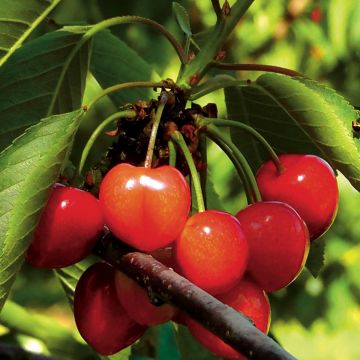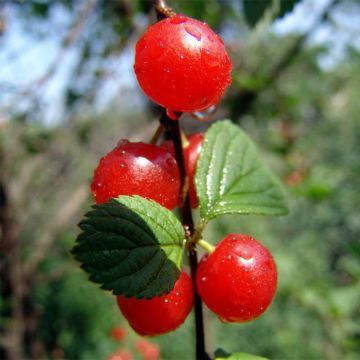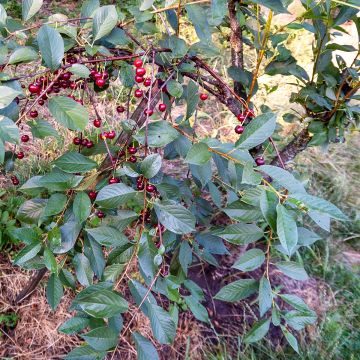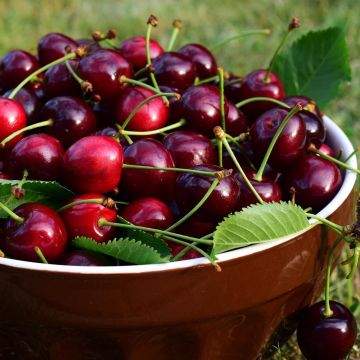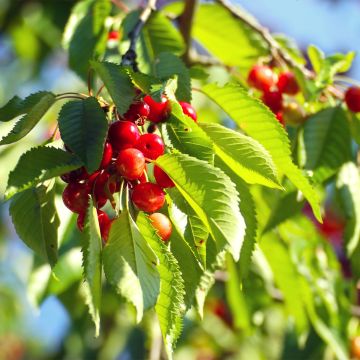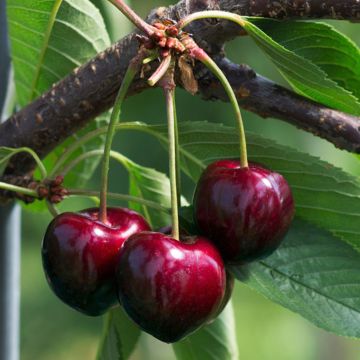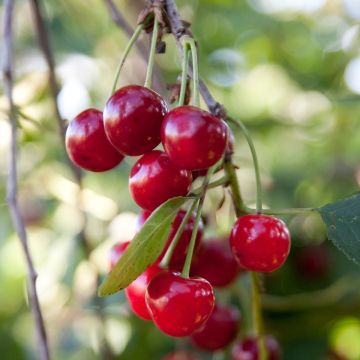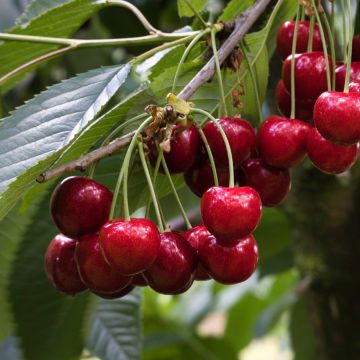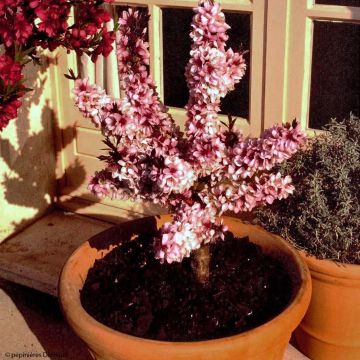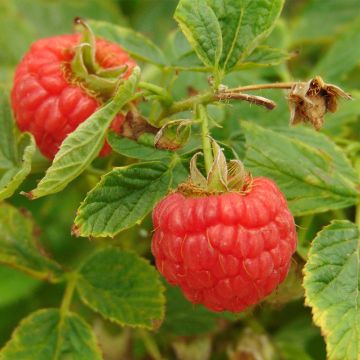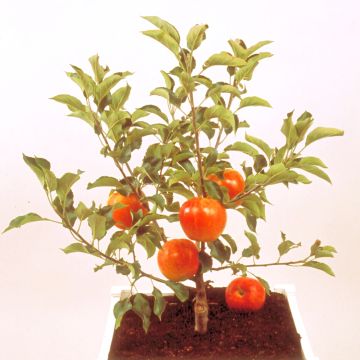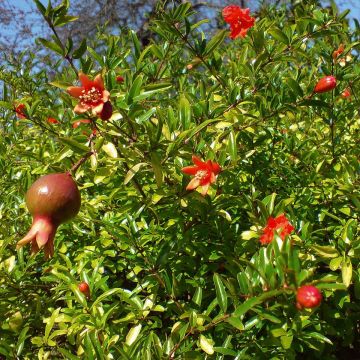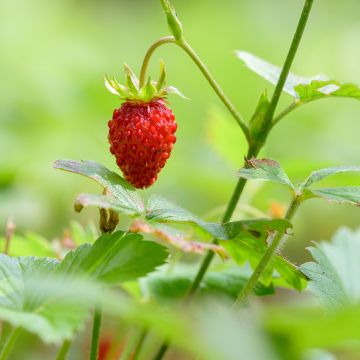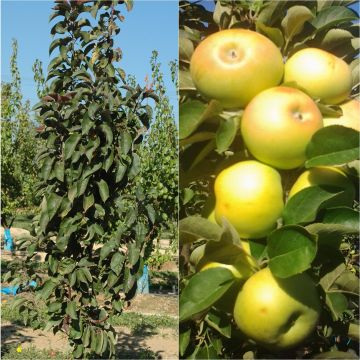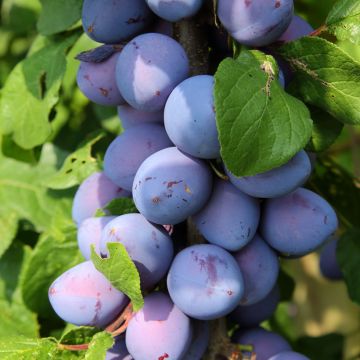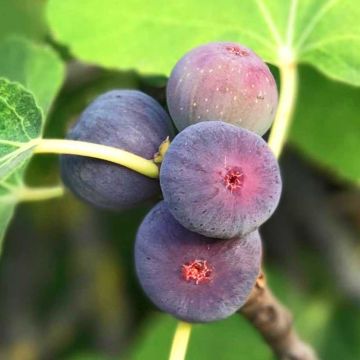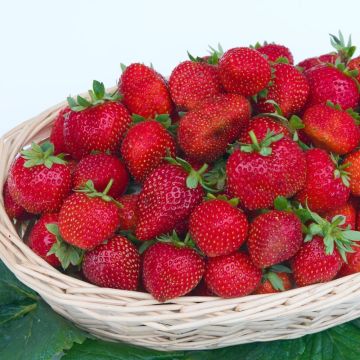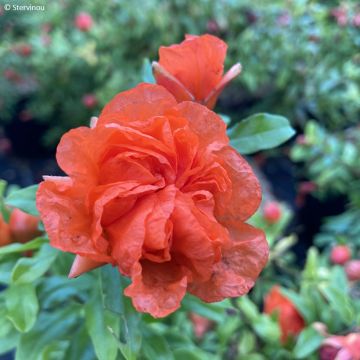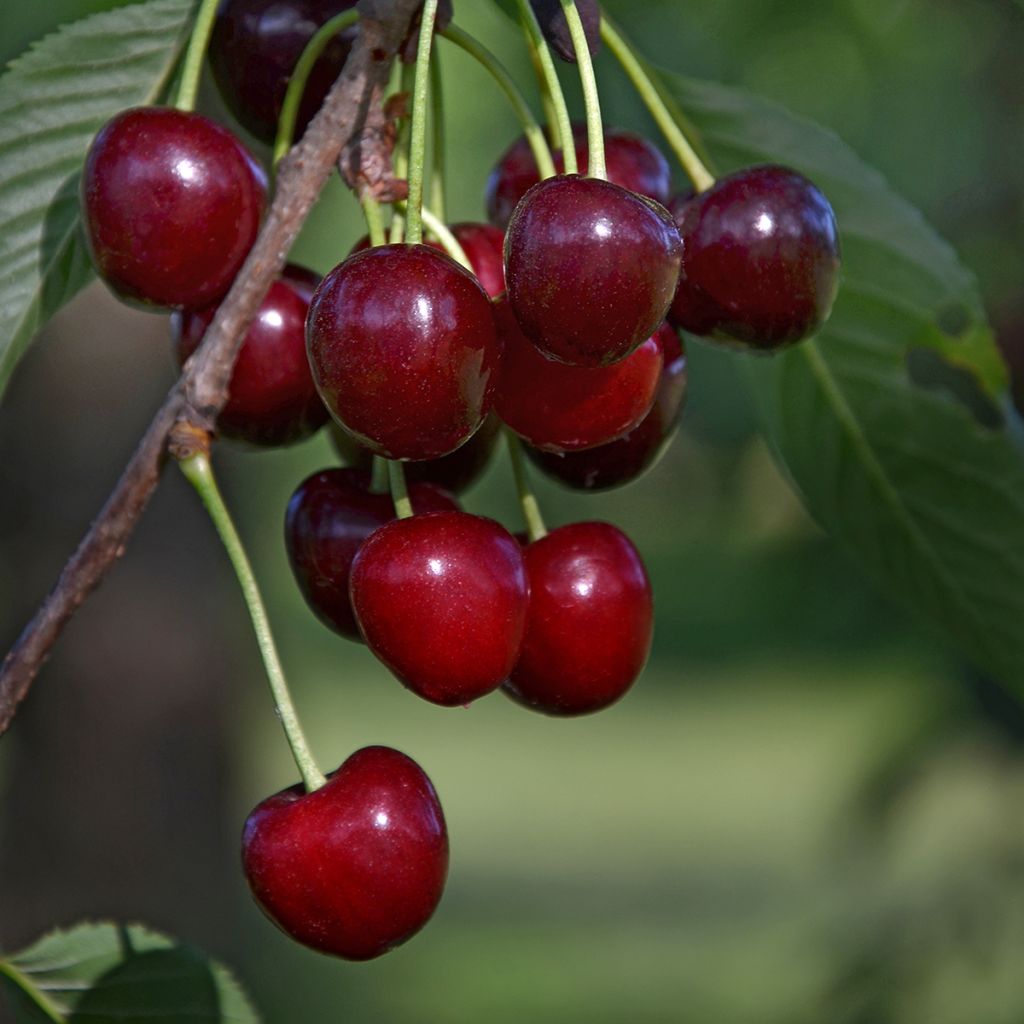

Prunus Carmine Jewel - Dwarf Cherry
Prunus Carmine Jewel - Dwarf Cherry
Prunus cerasus x fruticosa Carmine Jewel
Ground Cherry, Dwarf Cherry
The bushes arrived in good condition... can't wait for next year to have some fruits!
Patricia , 17/09/2024
This item cannot be shipped to the selected country
Delivery charge from €5.90
Delivery to Corse prohibited
More information
Schedule delivery date,
and select date in basket
This plant carries a 6 months recovery warranty
More information
We guarantee the quality of our plants for a full growing cycle, and will replace at our expense any plant that fails to recover under normal climatic and planting conditions.
From €5.90 for pickup delivery and €6.90 for home delivery
Express home delivery from €8.90.
Delivery to Corse prohibited: UE law prohibits the import of this plant from mainland France to Corse as part of the fight against Xylella fastidiosa. Please accept our sincere apologies.
More information
Description
Prunus cerasus 'Carmine Jewel' is a self-fertile dwarf cherry tree variety, with small sour cherries as its fruit. It forms a bush without a trunk, with branches starting near the ground and reaching a height of 2m (7ft). This makes it ideal for small spaces and pots, but it also makes it very easy to harvest the fruit. These small dark red fruits, very abundant in June and July, have a sweet and juicy flesh, suitable for both sweet and savory dishes. Very hardy, it is easy to grow everywhere except in clayey soil.
Prunus cerasus belongs to the Rosaceae family, also known as the 'Morello' cherry tree or Sour cherry tree. It is native to Asia Minor and grows quite widely in Europe. Hardy, it withstands cold and adapts well to all regions. If grown in a pot, it is advisable to protect it during cold periods. It prefers a sunny exposure, slightly sheltered from the wind. It adapts to all types of soil, even slightly calcareous, except for clayey soil.
The 'Carmine Jewel' variety is characterized by its bushy habit, without a trunk. It does not exceed 1.5 to 2 metres (5 to 7 feet) in height, with the same width. Its flowers appear as early as March, before the leaf bud burst period. This flowering, composed of white flowers grouped in clusters, very early in spring, is always a dazzling sight announcing the end of winter. In the garden, the flowering Sour cherry tree is very attractive to bees, which willingly collect its nectar. The reddish wood is a characteristic feature of the cherry tree family. In June-July, this Sour cherry tree produces an abundant crop of small red fruits, smaller than sweet cherries, with firm and juicy flesh. The fruit is attached to the branch by a short petiole measuring 1 to 2cm (0 to 1in) long. The deciduous foliage is light green and takes on brownish-orange hues in autumn.
The fruit or drupe of the dwarf cherry tree is rich in antioxidants, making it beneficial for health. It can be eaten raw from the tree, but sour cherries reveal their flavors in cooking to enhance sweet pastries or savory dishes, or simply in jam.
Report an error about the product description
Plant habit
Fruit
Flowering
Foliage
Botanical data
Prunus
cerasus x fruticosa
Carmine Jewel
Rosaceae
Ground Cherry, Dwarf Cherry
Cultivar or hybrid
Other Cherry trees
Planting and care
Easy to grow, Cherry Trees grow in all types of soil, acidic or calcareous. It prefers moist, light soils and fears heavy and clayey soils. Choose a sunny location. In order to limit the risks of late frosts on the flowers, it is recommended to plant the Cherry Tree in a sheltered position, facing west and protected from cold winds in regions that experience spring frosts. Planting is preferably done in autumn. If you plant several plants, space them 1 metre (3 feet) apart for dwarf varieties.
Loosen the soil deeply, remove stones and unwanted weeds. Add some sand to improve drainage. Dig a hole 4 to 5 times the volume of the root ball. Make sure to separate the subsoil from the topsoil. Mix crushed horn or well-rotted compost or potting soil with the subsoil and pour this mixture into the planting hole. Install a stake. Place the root ball, cover with the topsoil and firm it down. Water generously (about 10 litres). Tie the stake to the plant, crossing the tie in a figure 8 shape, without touching the trunk.
During cultivation, watering is not necessary except in case of high temperatures. Mulch at the base to keep it cool in summer. Protect your harvest by installing, either a bird net, aluminum foil or old CDs. In case of aphid attack, spray with soapy water.
For container planting: Place a layer of gravel or clay pellets at the bottom of the pot to facilitate drainage. Add a layer of soil and then place the plant and cover with a mixture of 2/3 garden soil, 1/3 potting soil or well-rotted compost. Every spring, surface the pot by replacing the top layer with fresh potting soil. Water regularly and moderately. At the end of autumn, protect the pot with insulation before winter frosts.
Planting period
Intended location
Care
-
, onOrder confirmed
Reply from on Promesse de fleurs
Fruit trees for small gardens
Haven't found what you were looking for?
Hardiness is the lowest winter temperature a plant can endure without suffering serious damage or even dying. However, hardiness is affected by location (a sheltered area, such as a patio), protection (winter cover) and soil type (hardiness is improved by well-drained soil).

Photo Sharing Terms & Conditions
In order to encourage gardeners to interact and share their experiences, Promesse de fleurs offers various media enabling content to be uploaded onto its Site - in particular via the ‘Photo sharing’ module.
The User agrees to refrain from:
- Posting any content that is illegal, prejudicial, insulting, racist, inciteful to hatred, revisionist, contrary to public decency, that infringes on privacy or on the privacy rights of third parties, in particular the publicity rights of persons and goods, intellectual property rights, or the right to privacy.
- Submitting content on behalf of a third party;
- Impersonate the identity of a third party and/or publish any personal information about a third party;
In general, the User undertakes to refrain from any unethical behaviour.
All Content (in particular text, comments, files, images, photos, videos, creative works, etc.), which may be subject to property or intellectual property rights, image or other private rights, shall remain the property of the User, subject to the limited rights granted by the terms of the licence granted by Promesse de fleurs as stated below. Users are at liberty to publish or not to publish such Content on the Site, notably via the ‘Photo Sharing’ facility, and accept that this Content shall be made public and freely accessible, notably on the Internet.
Users further acknowledge, undertake to have ,and guarantee that they hold all necessary rights and permissions to publish such material on the Site, in particular with regard to the legislation in force pertaining to any privacy, property, intellectual property, image, or contractual rights, or rights of any other nature. By publishing such Content on the Site, Users acknowledge accepting full liability as publishers of the Content within the meaning of the law, and grant Promesse de fleurs, free of charge, an inclusive, worldwide licence for the said Content for the entire duration of its publication, including all reproduction, representation, up/downloading, displaying, performing, transmission, and storage rights.
Users also grant permission for their name to be linked to the Content and accept that this link may not always be made available.
By engaging in posting material, Users consent to their Content becoming automatically accessible on the Internet, in particular on other sites and/or blogs and/or web pages of the Promesse de fleurs site, including in particular social pages and the Promesse de fleurs catalogue.
Users may secure the removal of entrusted content free of charge by issuing a simple request via our contact form.
The flowering period indicated on our website applies to countries and regions located in USDA zone 8 (France, the United Kingdom, Ireland, the Netherlands, etc.)
It will vary according to where you live:
- In zones 9 to 10 (Italy, Spain, Greece, etc.), flowering will occur about 2 to 4 weeks earlier.
- In zones 6 to 7 (Germany, Poland, Slovenia, and lower mountainous regions), flowering will be delayed by 2 to 3 weeks.
- In zone 5 (Central Europe, Scandinavia), blooming will be delayed by 3 to 5 weeks.
In temperate climates, pruning of spring-flowering shrubs (forsythia, spireas, etc.) should be done just after flowering.
Pruning of summer-flowering shrubs (Indian Lilac, Perovskia, etc.) can be done in winter or spring.
In cold regions as well as with frost-sensitive plants, avoid pruning too early when severe frosts may still occur.
The planting period indicated on our website applies to countries and regions located in USDA zone 8 (France, United Kingdom, Ireland, Netherlands).
It will vary according to where you live:
- In Mediterranean zones (Marseille, Madrid, Milan, etc.), autumn and winter are the best planting periods.
- In continental zones (Strasbourg, Munich, Vienna, etc.), delay planting by 2 to 3 weeks in spring and bring it forward by 2 to 4 weeks in autumn.
- In mountainous regions (the Alps, Pyrenees, Carpathians, etc.), it is best to plant in late spring (May-June) or late summer (August-September).
The harvesting period indicated on our website applies to countries and regions in USDA zone 8 (France, England, Ireland, the Netherlands).
In colder areas (Scandinavia, Poland, Austria...) fruit and vegetable harvests are likely to be delayed by 3-4 weeks.
In warmer areas (Italy, Spain, Greece, etc.), harvesting will probably take place earlier, depending on weather conditions.
The sowing periods indicated on our website apply to countries and regions within USDA Zone 8 (France, UK, Ireland, Netherlands).
In colder areas (Scandinavia, Poland, Austria...), delay any outdoor sowing by 3-4 weeks, or sow under glass.
In warmer climes (Italy, Spain, Greece, etc.), bring outdoor sowing forward by a few weeks.



































